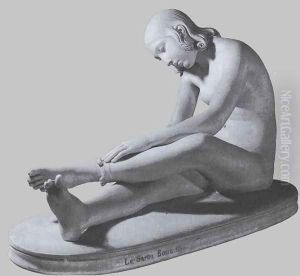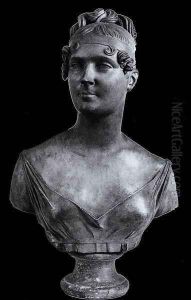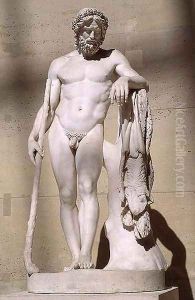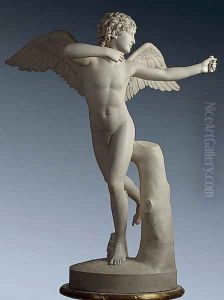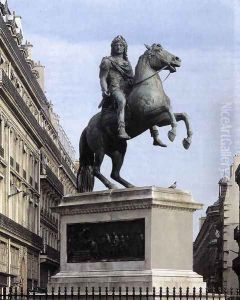Francois-Joseph Bosio Paintings
François-Joseph Bosio was a prominent French sculptor of the late 18th and early 19th centuries, born on March 19, 1768, in Monaco. His early life in Monaco laid the foundation for his artistic pursuits, but it was in Paris that his career truly flourished. Bosio received his initial training in art in his hometown, showing an early aptitude for drawing and sculpture. Seeking broader horizons and greater opportunities, he moved to Paris, where he became a pupil of the renowned sculptor Augustin Pajou. His talent was soon recognized, and he won the prestigious Prix de Rome in 1788, which allowed him to study at the French Academy in Rome, an experience that profoundly influenced his artistic development.
During his time in Rome, Bosio was exposed to the masterpieces of classical antiquity and the Renaissance, which deeply impacted his aesthetic sensibilities. His style, characterized by a blend of classical grace and Romantic expression, became fully developed during these formative years. After returning to Paris, Bosio's career advanced significantly during the Napoleonic era. He became one of the Emperor's preferred sculptors, receiving numerous commissions that included statues, busts, and reliefs. Among his most famous works from this period are the statue of 'Hercules Battling Achelous' and the 'Equestrian Statue of Louis XIV' for the Place des Victoires in Paris, showcasing his mastery of both mythological themes and portraiture.
Bosio's contributions to art were not limited to the Napoleonic era. Following the fall of Napoleon, he continued to receive significant commissions from the restored Bourbon monarchy, including the decoration of the Chapelle Expiatoire and the creation of the 'Bath of the Nymphs'. He was made a Baron by Louis XVIII and later served as the official court sculptor for Charles X. His works from this period reflected a continued commitment to classical themes, executed with a level of detail and emotional depth that spoke to the Romantic sensibilities of the time.
François-Joseph Bosio died on July 29, 1845, in Paris. His legacy is preserved not only in the sculptures that adorn public spaces and museums but also in his influence on subsequent generations of artists. Bosio's ability to bridge the classical and the Romantic, to capture both the idealized beauty of the ancient world and the emotional intensity of his own, makes him a significant figure in the history of French sculpture. His works continue to be studied and admired for their technical mastery and expressive power.
